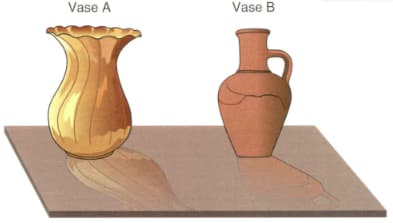Describe two differences between boiling and evaporation.

Important Questions on Properties of Matter and Materials
Shilpa has just done the washing. Now she is hanging out her clothes in the sunshine. When, she comes back in a few hours her clothes will be dry.
Explain what happens to the water in the wet clothes.
Complete the sentences.
A material that lets light pass through it is_____. An example of this is _____. _____ materials do not allow any light through _____ is an example of this type of material.
Two full bottles of water were placed in a freezer overnight. The next morning one bottle was cracked, but the other was not. Use your knowledge of materials to explain the observation.
When water freezes it, _____.
If the bottle is made of glass, which is brittle, _____.
If the bottle is made of plastic, which is flexible, _____.
Therefore, one bottle must have been made from _____.
Clay is a natural material used to make pots and bricks. Clay can be described as both malleable and ductile.
Explain why these are both important properties of clay.
Identify the physical properties of metals.

Sort the materials below into conductors and insulators of electricity.
| iron nail wooden spoon clay brick copper wire |
Write the words in the correct column:

Look at the two vases. State which vase is made from non-metal. Use the evidence in the images to explain your answer.

Vase B is made from a _____. It has a crack, which shows that the material is _____.
Vase A is shiny and B is not. Generally metals are _____ and non-metals are _____.
